The fragility of life is a commonly accepted truth. Reflecting on the precise nature of the conditions necessary for life, it becomes clear that life hangs in an incredibly delicate balance. Take, for example, the location of Earth within our galaxy. It is situated in what is known as the habitable area, also referred to as the Goldilocks zone. This zone is the perfect distance from the sun to allow for the existence of liquid water on Earth. If we were slightly closer to the sun, this water would evaporate and if we were a bit further away, it would all freeze. Water is essential for the kind of existence we have; therefore, our survival is reliant on our planet’s ability to maintain its position in this precisely defined habitable zone.
Remarkable as it may be, the habitable zone is not the only precarious situation enabling life to exist. On today’s list, we’re going to go over 25 precise things that show hos precarious life really is. A slight deviation from any of these examples could spell the end of life as we know it. It’s a bit scary when you think about it and it’s definitely a reason to pause and consider. Life is fragile. We’re literally hanging by a thread.

Tropospheric ozone
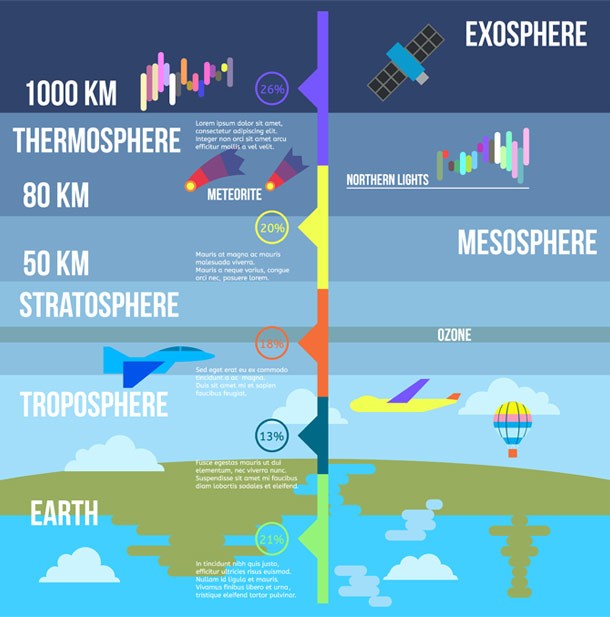 Source: The Incredibly Precise Design of Our Universe, Ideo.Columbia.edu, Image: Wikipedia
Source: The Incredibly Precise Design of Our Universe, Ideo.Columbia.edu, Image: Wikipedia We begin this list with the tropospheric ozone. In simple terms, the tropospheric ozone is ground-level ozone. As it currently stands, if it were to increase in quantity, animals would experience respiratory failure. It would also hinder crop yields and ozone-sensitive species would die. However, if it were smaller, biochemical smog would destroy most life.
Our galaxy’s shape
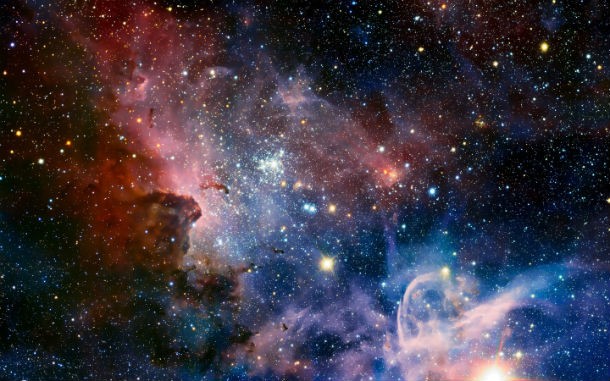 Source: The Incredibly Precise Design of Our Universe, universetoday.com,, Image: Wikipedia
Source: The Incredibly Precise Design of Our Universe, universetoday.com,, Image: Wikipedia Galaxies come in roughly four shapes: spiral, elliptical, lenticular, and irregular. The Milky Way galaxy is a prime example of a spiral galaxy though there are many more spiral galaxies out there. Our case as of this moment is unique as we are the only galaxy (so far) know to harbor life. If our galaxy was too elliptical, then the formation of stars would cease before sufficient amounts of heavy elements had the chance to form and create life chemistry. On the other hand, if our galaxy’s shape was too irregular, then we would have been exposed to harsh radiation which would inhibit the formation of life-essential heavy elements.
The frequency and extent of ice ages
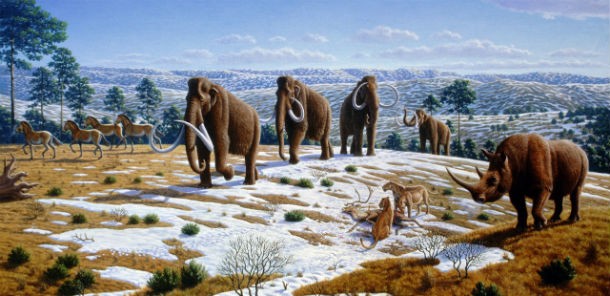 Source: The Incredibly Precise Design of Our Universe, Image: Wikipedia
Source: The Incredibly Precise Design of Our Universe, Image: Wikipedia This may sound a bit odd but it’s believed that if there were no ice ages or even fewer than what have occurred then Earth’s surface would lack fertile valleys, essential for advanced life. Moreover, mineral concentrations would be insufficient as well. On the other hand, if ice ages had been more frequent, then Earth would experience freezing temperatures that wouldn’t allow for any form of intelligent life.
The distribution of continents
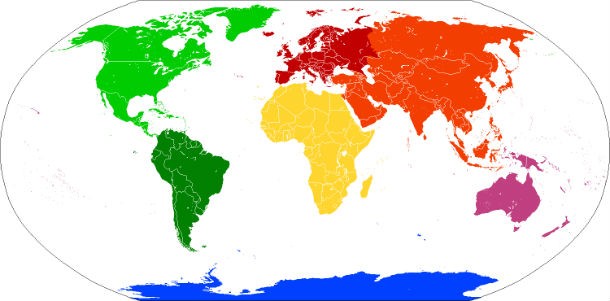 Source: The Incredibly Precise Design of Our Universe, Image: Wikipedia
Source: The Incredibly Precise Design of Our Universe, Image: Wikipedia Even the distribution of our continents have a direct impact on life as we know it. If our continents were distributed more towards the southern hemisphere, then sea salt aerosols would not be enough to stabilize our planet’s surface temperature and the water cycle. As a result, “increased seasonal differences would limit the available habitats for advanced land life”.
Earth’s atmospheric pressure
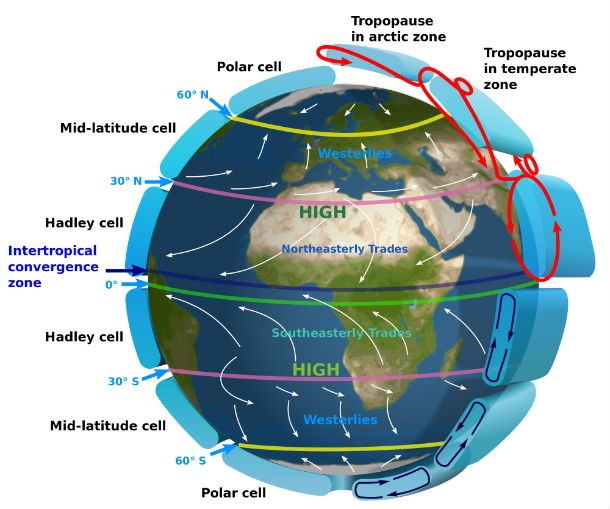 Source: The Incredibly Precise Design of Our Universe, Space.com, Image: Wikipedia
Source: The Incredibly Precise Design of Our Universe, Space.com, Image: Wikipedia Our atmosphere is responsible for containing the air necessary for life and it also protects us from the harmful radiation emitted by the sun. Earth’s atmosphere is about 300 miles thick (but most of it is within 10 miles from the surface). The further up in the atmosphere you go, the less air pressure there is. For example, at sea level, air pressure is about 14.7 pounds per square inch, and at 10,000 feet, air pressure is 10 pounds per square inch. If there was less atmospheric pressure, liquid water would evaporate too easily and condense too infrequently to support life. However, if air pressure was greater, the opposite would be true, there would be inadequate liquid water evaporation to support life. Furthermore, not enough sunlight and UV radiation would reach Earth’s surface.
Our planet's “electricity”
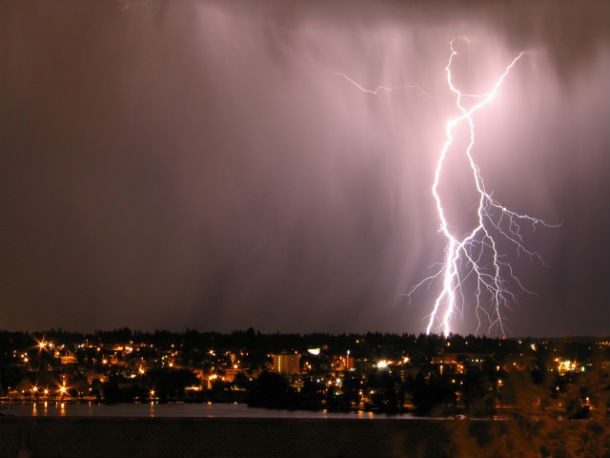 Source: The Incredibly Precise Design of Our Universe, Image: commons.wikimedia.org
Source: The Incredibly Precise Design of Our Universe, Image: commons.wikimedia.org Many people are killed by lightning annually worldwide. But lightning may be a key to the origin of life. With water, methane, and other chemicals in the atmosphere, lightning can create amino acids and sugars that are the building blocks of life. In 1953 the well-known Miller-Urey experiment raised the possibility that lightning may have been a key to life’s origins.
Temperate Zones
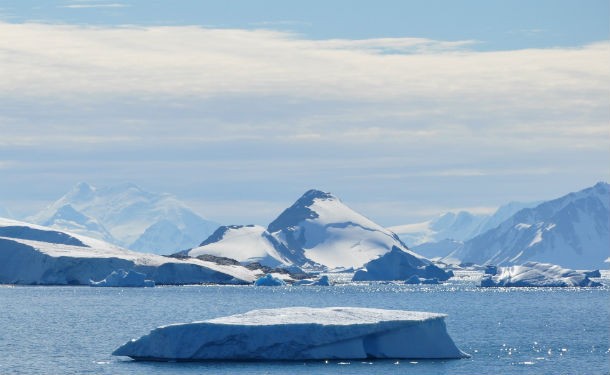 Source: The Incredibly Precise Design of Our Universe, Image: Wikipedia
Source: The Incredibly Precise Design of Our Universe, Image: Wikipedia Some life has adapted to the most frigid places on Earth—including Antarctica, where the planet’s record low was set at minus 128.6 degrees Fahrenheit, or minus 89.2 degrees Celsius—and its hottest deserts. But life achieves its greatest diversity in more temperate climates, namely the tropics.
Proper seismic activity
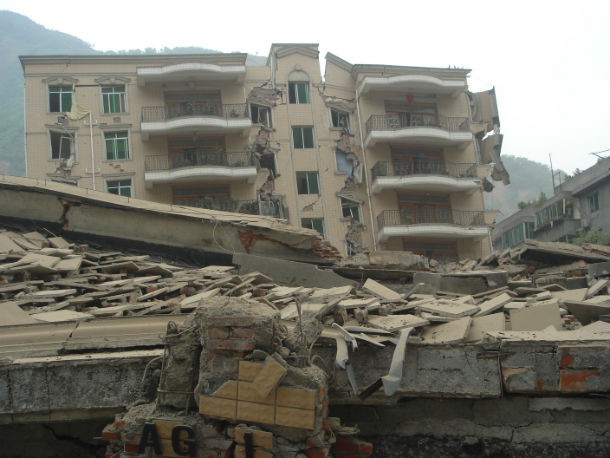 Source: The Incredibly Precise Design of Our Universe, Image: Wikipedia
Source: The Incredibly Precise Design of Our Universe, Image: Wikipedia According to science, if there were no earthquakes then nutrients on the ocean floor from river runoff would not be recycled to continents through tectonics; not enough carbon dioxide would be released from carbonate buildup and life would become hard to maintain.
Perfect timing of solar nebula formation relative to supernova eruption
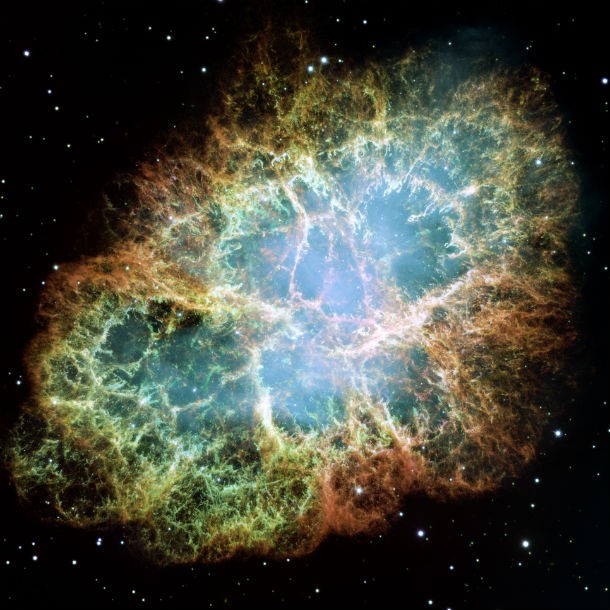 Source: The Incredibly Precise Design of Our Universe, Image: Wikipedia
Source: The Incredibly Precise Design of Our Universe, Image: Wikipedia If the timing of solar nebula formation relative to supernova eruption occurred earlier, nebula would be blown apart. If it happened later, nebula would not attract enough heavy elements for life chemistry.
Our galaxy’s size
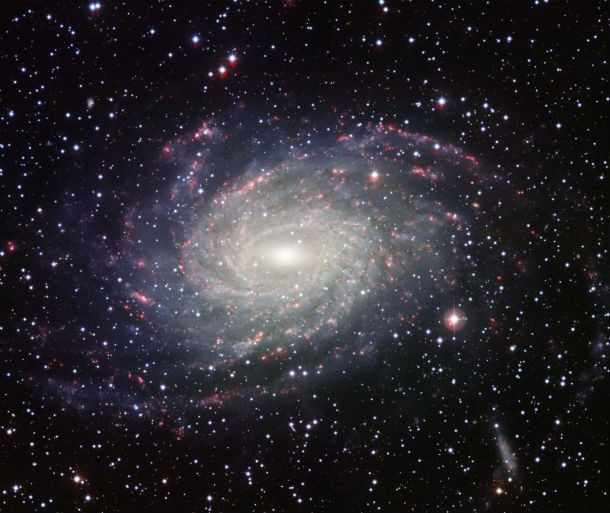 Source: The Incredibly Precise Design of Our Universe, Image: Wikipedia
Source: The Incredibly Precise Design of Our Universe, Image: Wikipedia According to science, our galaxy is in the top one percent of the most massive and luminous galaxies in the universe and is the perfect size to sustain life. Not too large, since in this case the infusion of gas and stars would disturb the sun’s orbit and ignite deadly galactic eruptions, and not too small, where the infusion of gas would be insufficient to sustain star formation long enough for life to form.
Ideal volcanic activity
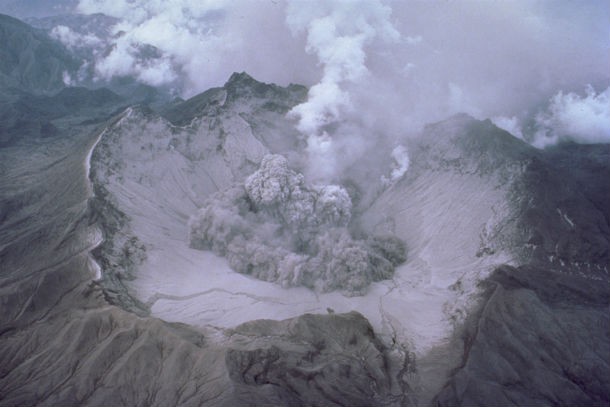 Source: The Incredibly Precise Design of Our Universe, Image: Wikipedia
Source: The Incredibly Precise Design of Our Universe, Image: Wikipedia Believe it or not, if Earth had less volcanic activity. it would produce insufficient amounts of carbon dioxide and water vapor would return to the atmosphere. That means soil mineralization would be insufficient for advanced life support. On the other hand, if we had too many volcanoes erupting then advanced life would be destroyed and the ecosystem would be fatally damaged.
H+ 3 production
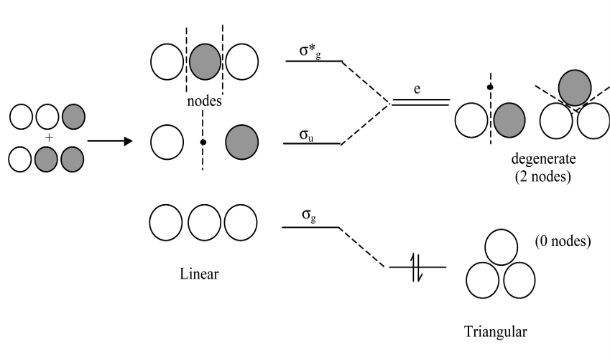 Source: The Incredibly Precise Design of Our Universe, Image: Wikipedia
Source: The Incredibly Precise Design of Our Universe, Image: Wikipedia The trihydrogen cation, also known as protonated molecular hydrogen or H+3, is one of the most abundant ions in the universe. It is stable in the interstellar medium (ISM) due to the low temperature and low density of interstellar space. The role that H+3 plays in the gas-phase chemistry of the ISM is unequalled by any other ion. If, however, it were less than it is now, simple molecules essential to planet formation and life chemistry would never form. If it were too great, planets would form at the wrong time and position in space for life.
Axial tilt
 Source: The Incredibly Precise Design of Our Universe, Image: Wikipedia
Source: The Incredibly Precise Design of Our Universe, Image: Wikipedia In astronomy, axial tilt is the angle between a planet’s rotational axis at its north pole and a line perpendicular to the planet’s orbital plane. It is also called axial inclination or obliquity. Earth’s axial tilt causes the seasons. If, however, it were greater or less as it is on most other planets in our solar system, then surface temperature differences would be too great to sustain diverse life-forms, including human life.
The ideal iron quantity in oceans and soils
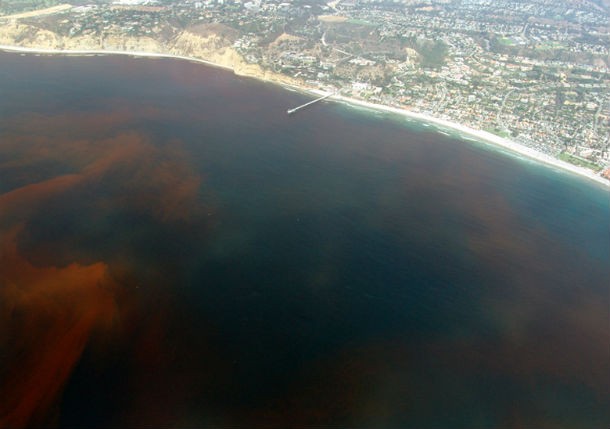 Source: The Incredibly Precise Design of Our Universe, Image: Wikipedia
Source: The Incredibly Precise Design of Our Universe, Image: Wikipedia Once again, there are some things we take for granted. If for some reason the iron quantity in the ocean and soil were greater than it is now, iron poisoning would destroy advanced life. If it were less, then food to support advanced life would be insufficient.
The quantity of sulfur in Earth’s core
 Source: The Incredibly Precise Design of Our Universe, Image: commons.wikimedia.org
Source: The Incredibly Precise Design of Our Universe, Image: commons.wikimedia.org Research in 2015 confirmed that Earth’s core contains very large amounts of sulfur, estimated to be up to 8.5 x 1018 tons. This is about ten times the amount of sulfur elsewhere on the planet, and to compare, is around ten percent of the moon’s total mass. What does this mean? Well, if there was a larger amount of sulfur in Earth’s core then a solid inner core would never form, disrupting the magnetic field and making life on Earth impossible. If it were smaller than what it is currently, solid inner core formation would begin a little too soon, causing it to grow too rapidly and extensively, also disrupting the magnetic field.
The location of our solar system
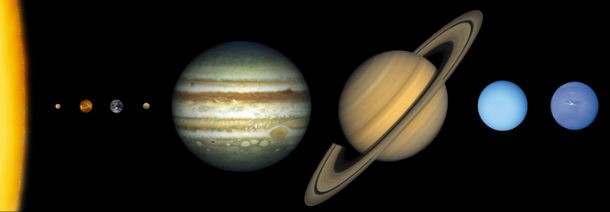 Source: The Incredibly Precise Design of Our Universe, Image: Wikipedia
Source: The Incredibly Precise Design of Our Universe, Image: Wikipedia The location of our solar system appears to be another important factor that allows Earth to harbor life. Our solar system is located very far from the center of the galaxy—where there is a great black hole, many stars burn out , and supernovas that kill off life—and between the spiral arms, which puts us far from the supernovas and give us a great view to study and observe the universe.
The magic of gravity
 Source: The Incredibly Precise Design of Our Universe; dsls.usra.edu, Image: Wikipedia
Source: The Incredibly Precise Design of Our Universe; dsls.usra.edu, Image: Wikipedia Even though we take gravity for granted, the truth is that without Earth’s gravity, human life wouldn’t exist. Gravity is responsible for giving weight to all that is found in our planet. This means gravity allows rain to fall and water to drain, air movement, and even heat dissipation. Furthermore, it’s believed gravity is a major contributor to biological changes such as the evolution of species from water to land.
Oxygen and carbon
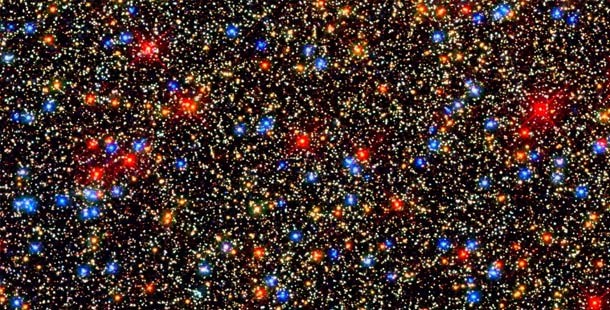 Source: The Incredibly Precise Design of Our Universe; map.gsfc.nasa.gov, Image: YouTube
Source: The Incredibly Precise Design of Our Universe; map.gsfc.nasa.gov, Image: YouTube We are carbon lifeforms (We are made up of water and we breathe oxygen). However, carbon and oxygen were not made in the big bang. Scientists believe, these elements were made much later in stars. Early stars were massive but short-lived. They consumed elements available in the very beginning: hydrogen, helium and lithium. In return they produced heavier elements (Carbon and Oxygen) which the stars spread throughout the universe when they died. The absence of the creation of these elements would have meant the absence of life.
Earth’s rotation
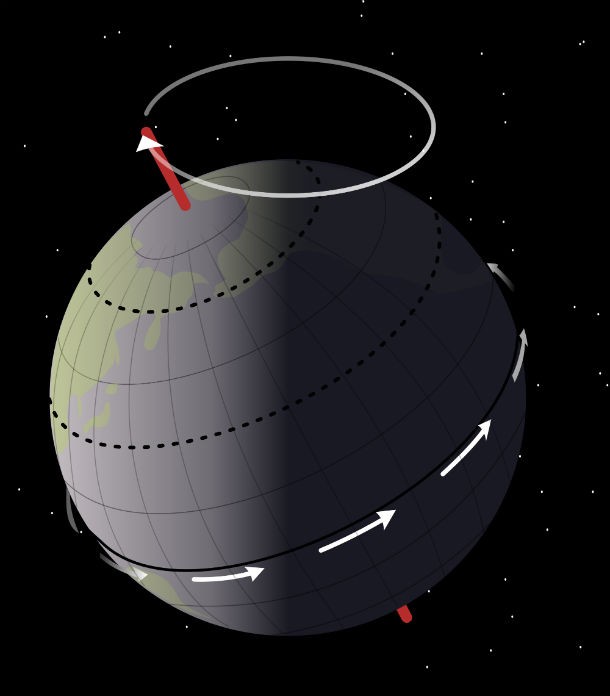 Source: The Incredibly Precise Design of Our Universe, Image: Wikipedia
Source: The Incredibly Precise Design of Our Universe, Image: Wikipedia Earth’s rotation allows for what appears as the sun rising each morning and, thankfully, setting in the evenings. If it weren’t for this, one side of the world would be unbearably hot and the other would be colder than ice. Life wouldn’t be possible anywhere on the planet.
The gravitational tug of the moon
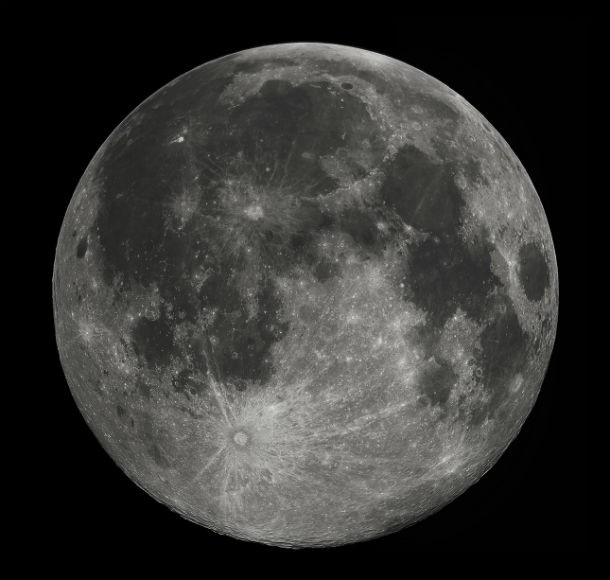 Source: The Incredibly Precise Design of Our Universe, Image: Wikipedia
Source: The Incredibly Precise Design of Our Universe, Image: Wikipedia The moon has its own beneficial effects on our planet as well. Scientists now know that Earth originally had a rotational period of eight hours. Such a rapid rotational period would have resulted in surface wind velocities in excess of five hundred miles per hour. The gravitational pull of the moon over the last four billion years has increased the earth’s rotational period to twenty-four hours.
Earth’s magnetic field
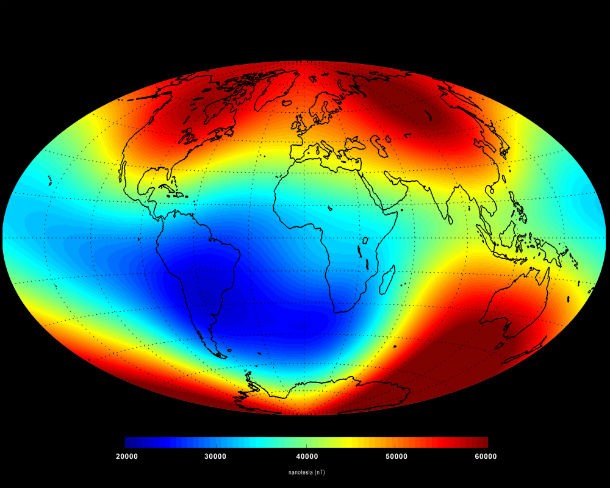 Source: The Incredibly Precise Design of Our Universe, Image: commons.wikimedia.org
Source: The Incredibly Precise Design of Our Universe, Image: commons.wikimedia.org If Earth did not have a strong and relatively stable magnetic field, we’d all be fried by cosmic rays and solar storms. The bad news is that every 300,000 years the magnetic poles flip, a process that takes thousands of years. Scientists guarantee that we’re overdue for another flip, which means your distant future descendants will need to buy new compasses.
The moon’s exact matching size and distance
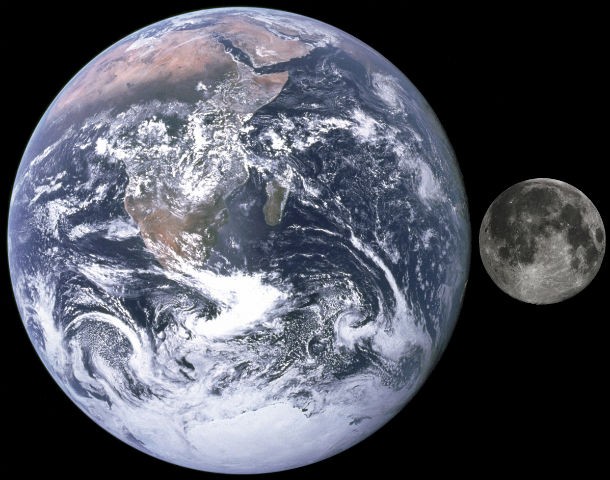 Source: The Incredibly Precise Design of Our Universe, Image: Wikipedia
Source: The Incredibly Precise Design of Our Universe, Image: Wikipedia The moon is four hundred times smaller than the sun; it is also four hundred times closer to Earth than the sun and as a result covers the sun exactly. This makes Earth the only place in the solar system from which to observe a solar eclipse. Solar eclipses have helped science verify some laws of physics, including Einstein’s theory of relativity, which predicted that light would be curved by a gravitational field, and that the sun’s field is the only one in the solar system strong enough to detect the curving.
Jupiter is our Guardian Angel
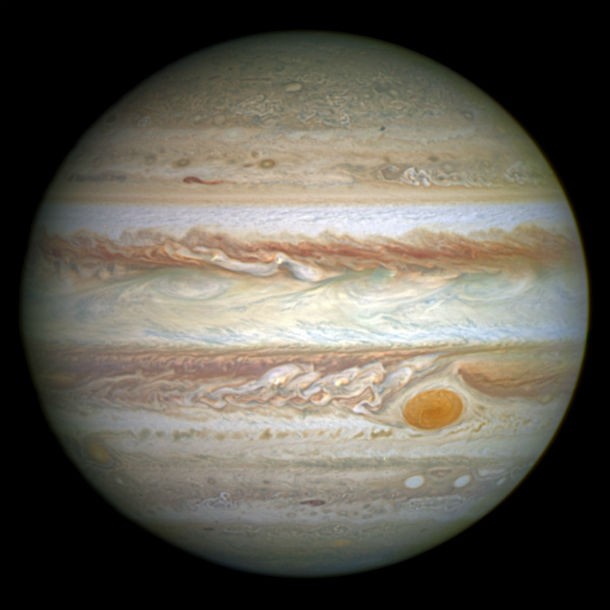 Source: The Incredibly Precise Design of Our Universe, Image: Wikipedia
Source: The Incredibly Precise Design of Our Universe, Image: Wikipedia Jupiter’s size helps shield Earth from many asteroids and comets by drawing this space debris to itself. Also, the presence of Jupiter-like planets in the universe is rare.
Our position in space
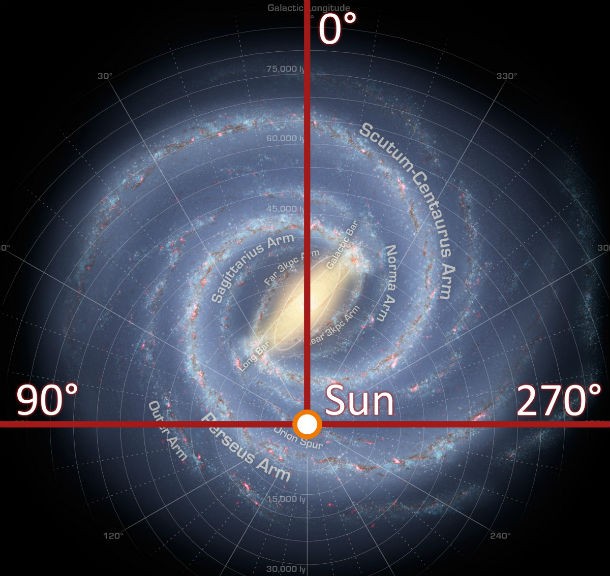 Source: The Incredibly Precise Design of Our Universe, Image: Wikipedia
Source: The Incredibly Precise Design of Our Universe, Image: Wikipedia Earth doesn’t exist in a vacuum. The space in our solar system is dotted with asteroids and comets, dust and traces of gas. Even now, small space rocks rain down on Earth daily. Big ones slam into the planet often enough to keep NASA on constant lookout. And in the early years of the planet’s formation, giant collisions with comets and asteroids brought water and other important chemicals to the planet, making the origins of life possible.
Earth’s ideal distance from the sun
 Source: The Incredibly Precise Design of Our Universe, Image: Wikipedia
Source: The Incredibly Precise Design of Our Universe, Image: Wikipedia Our world orbits the sun at just the right distance. This habitable zone is where water can exist in liquid form; a basic requirement for life.



























